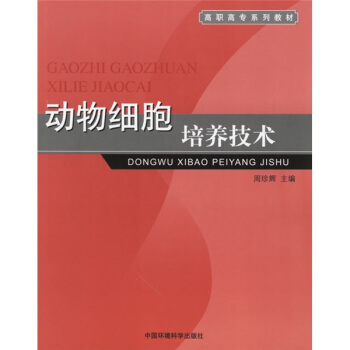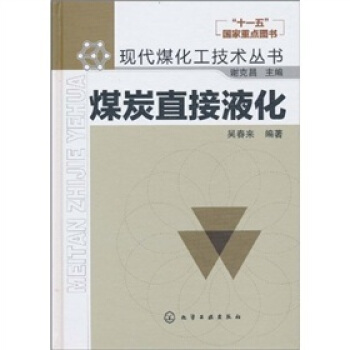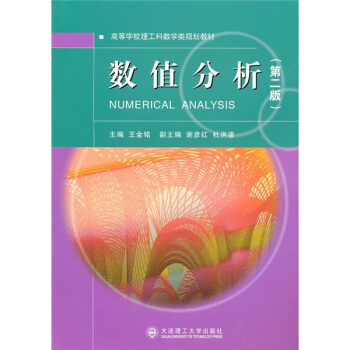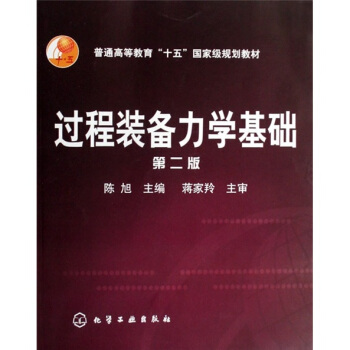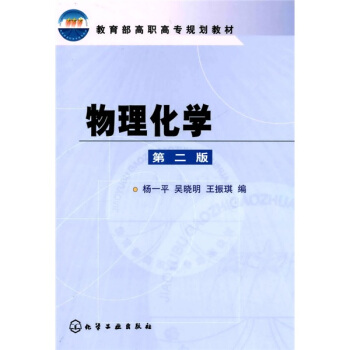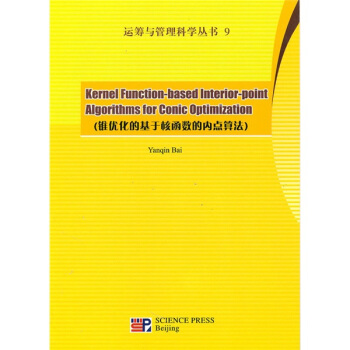

具体描述
内容简介
《锥优化的基于核函数的内点算法》共分七章,第1章介绍锥优化理论方法的发展历程,第2章介绍核函数及其性质、由核函数确定的障碍函数的性质,第3~6章分别介绍中心路径的概念、锥的代数性质,给出求解线性规划问题、P*(k)线性互补问题、半正半优化问题、二阶锥优化问题的基于核函数的内点算法,分析了大步算法、小步内点算法的计算复杂性。《锥优化的基于核函数的内点算法》可作为运筹学专业的本科生、研究生关于内点算法的入门书,同时也可作为研究人员的关于内点算法的参考书。
内页插图
目录
PrefaceChapter 1 Introduction
1.1 Conic optimization problems
1.2 Conic duality
1.3 From the dual cone to the dual problem
1.4 Development of the interior-point methods
1.5 Scope of the book
Chapter 2 Kernel Functions
2.1 Definition of kernel functions and basic properties
2.2 The further conditions of kernel functions
2.3 Properties of kernel functions
2.4 Examples of kernel functions
2.5 Barrier functions based on kernel functions
2.6 Generalization of kernel function
2.6.1 Finite kernel function
2.6.2 Parametric kernel function
Chapter 3 Kernel Function-based Interior-point Algorithm for LO
3.1 The central path for LO
3.2 The search directions for LO
3.3 The generic primal-dual interior-point algorithm for LO
3.4 Analysis of the algorithm
3.4.1 Decrease of the barrier function during an inner iteration
3.4.2 Choice of the step size
3.5 Iteration bounds
3.6 Summary of computation for complexity bound
3.7 Complexity analysis based on kernel functions
3.8 Summary of results
Chapter 4 Kernel Function-based Interior-point Algorithm for P*(k) LCP
4.1 The P*(k)-LCP
4.2 The central path for P*(k)-LCP
4.3 The new search directions for P*(k)-LCP
4.4 The generic primal-dual interior-point algorithm for P*(k)-LCP...
4.5 The properties of the barrier function
4.6 Analysis of the algorithm
4.6.1 Growth behavior of the barrier function
4.6.2 Determining the default step size
4.7 Decrease of the barrier function during an inner iteration
4.8 Complexity of the algorithm
4.8.1 Iteration bound for the large-update methods
4.8.2 Iteration bound for the small-update methods
Chapter 5 Kernel Function-based Interior-point Algorithm for SDO
5.1 Special matrix functions
5.2 The central path for SDO
5.3 The new search directions for SDO
5.4 The generic primal-dual interior-point algorithm for SDO
5.5 The properties of the barrier function
5.6 Analysis of the algorithm
5.6.1 Decrease of the barrier function during an inner iteration
5.6.2 Choice of the step size
5.7 Iteration bounds
5.8 Kernel function-based schemes
5.9 The example
5.10 Numerical results
Chapter 6 Kernel Function-based Interior-point Algorithm for SOCO
6.1 Algebraic properties of second-order cones
6.2 Barrier functions defined on second-order cone
6.3 Rescaling the cone
6.4 The central path for SOCO
6.5 The new search directions for SOCO
6.6 The generic primal-dual interior-point algorithm for SOCO
6.7 Analysis of the algorithm
6.8 The crucial inequality
6.9 Decrease of the barrier function during an inner iteration
6.10 Increase of the barrier function during a μ-update
6.11 Iteration-bounds
6.12 Numerical results
6.13 Some technical lemmas
Appendix Three Technical Lemmas
Reference
精彩书摘
A linear optimization problem is the minimization of a linear function over a polyhedral set which can be viewed as the intersection of an affine space and the coneof nonnegative orthant. Many problems can be formulated as, or approximated bya linear optimization problem. There are many versions of interior-point methodsfor linear optimization. But the basic scheme of these methods is to remove theconstraint set and add a multiple of the barrier function to the objective function.Therefore, the barrier-based scheme reduces the constrained problem into a seriesof unconstrained problems, then to "trace" the path formed by the optimal solutions of unconstrained problems. "Trace" means that the optimal solutions ofunconstrained problems can be replaced by a good enough approximation of theoptimal solutions of unconstrained problems. The procedure of the scheme canbe gone on with updating the barrier parameter until the optimal set of linearoptimization problem is reached.前言/序言
锥优化问题是一个凸规划问题,它的目标函数是线性函数,约束集是仿射空间和一个锥的交集,它从优化问题可行域的结构推广了线性规划问题,为求解非线性最优化问题提供了一种新的框架,锥优化有凸结构和丰富的对偶理论,对偶问题具有对称的简洁结构,同时,又有广泛应用背景,除了在传统学科,在经济、金融、管理和工程技术等领域亦有广泛的应用,近年来,锥优化与新兴学科有了广泛交叉和应用,如在无线传感网络、信息理论、编码理论等信息学科找到了丰富的应用,20世纪80年代出现的内点算法推动了算法计算复杂性研究的发展,也成为求解锥优化问题的强大工具,迄今为止,锥优化和内点算法已成为数学规划和优化领域最活跃的研究课题之一。本书根据作者和其合作者Roos教授、Ghami博士、王国强博士近年来的研究工作,全面介绍求解线性规划、P(K)线性互补问题、半正定优化、二阶锥优化基于核函数的内点算法,核函数的重要性体现在它有简单的解析表达式、容易计算的高阶导数等良好性质。
用户评价
坦白说,当我翻开《锥优化的基于核函数的内点算法》时,内心是带着一丝忐忑的。这类书籍通常意味着艰深的数学推导和复杂的算法描述,并非人人都能轻易驾驭。然而,正如我对它书名的第一印象一样,它所承载的学术价值是毋庸置疑的。我预感书中会详细阐述内点法的基本原理,从其迭代过程的几何直观,到线性代数和微积分在其中的巧妙应用。尤其是“核函数”的引入,我好奇它将如何被用来定义或改变问题的结构,从而使得原本难以求解的优化问题变得更加易于处理。书中是否会提供一些典型的应用案例,展示这些理论是如何落地,并解决实际工程难题的,这将是我特别关注的部分。我期待能从中学习到严谨的数学分析方法,理解算法的收敛性和效率是如何被保证的,并尝试理解那些抽象的数学概念在具体问题中扮演的角色。
评分这本书的书名《锥优化的基于核函数的内点算法》听起来就非常具有技术性和前瞻性。我对其中涉及的“内点算法”一直抱有浓厚的兴趣,因为它相较于传统的单纯形法,在处理大规模问题时往往表现出更优越的性能。而“锥优化”则进一步将问题推向了更一般的凸优化范畴,这使得算法的应用范围更加广泛。我尤其好奇“基于核函数的”这一部分,它是否意味着书中会介绍一些非线性核函数如何被融入内点法的框架中,从而能够处理那些传统内点法难以直接应对的非线性优化问题。例如,在机器学习的背景下,核方法已经取得了巨大成功,如果这种思想能够有效地迁移到锥优化领域,那将是非常令人兴奋的。我希望能从书中学习到如何设计和分析具有核函数特性的内点算法,以及理解其在计算效率和理论性质上的优势。
评分作为一个对计算科学领域有着浓厚兴趣的研究者,我第一时间就被《锥优化的基于核函数的内点算法》这个题目所吸引。我能够预见到这本书将是一部深入探讨现代优化理论和计算方法的力作。从书名来看,它显然是站在了凸优化理论的最前沿,特别是“锥优化”和“内点算法”这两个关键词,代表了该领域最核心和最具挑战性的部分。“基于核函数的”这一短语更是点睛之笔,它预示着本书将融合函数空间理论的强大力量,可能用于处理非线性的、或具有复杂几何结构的优化问题,这与我平日研究的某些课题有着潜在的联系。我非常期待书中能够对内点算法的理论基础进行严谨的数学推导,并深入分析核函数在算法设计中的具体作用和机制。同时,我也希望书中能够涉及一些前沿的研究方向和未解决的问题,为我的进一步探索提供启示。
评分初次看到《锥优化的基于核函数的内点算法》这个书名,我立刻被它所蕴含的数学深度和计算优化潜力所吸引。虽然我本人并非该领域的专家,但作为一名对前沿技术充满好奇的学习者,我深知这类书籍往往是打开新世界大门的钥匙。从书名本身,我能推测出它聚焦于非常精妙的优化问题,特别是涉及“锥优化”这一在凸优化理论中扮演着核心角色的分支,以及“内点算法”作为解决此类问题的强大工具。而“基于核函数的”这一限定,则进一步暗示了书中可能探讨了如何利用函数空间的强大表达能力来处理复杂的优化模型,这让我想到了机器学习中核技巧的成功,或许本书也从中汲取了灵感,将数学之美与实际计算紧密结合。我对书中可能深入剖析的理论框架、算法设计思路,以及其在工程、金融、统计等领域可能产生的深远影响充满了期待。我希望这本书能够带领我领略数学在解决复杂问题时所展现出的严谨与优雅,即便我可能无法完全掌握所有细节,但理解其核心思想和应用潜力,对我而言就已经是非常有价值的了。
评分对于《锥优化的基于核函数的内点算法》这本书,我的兴趣点更多地在于其潜在的应用前景和对算法性能的提升。我推测书中会深入探讨各种类型的锥(例如半正定锥、非负锥等)在不同优化问题中的作用,以及内点法是如何针对这些特定锥结构进行优化的。而“核函数”的加入,让我联想到可能存在一些非常规的、超越传统线性或二次模型的问题,需要更灵活的数学工具来描述。我非常希望能看到书中是如何将这些高维、非线性的概念,通过核函数映射到某个希腊空间,然后在新的空间中利用内点法进行求解。这种思想在机器学习领域早已证明了其非凡的威力,如果能够成功应用于锥优化,那无疑将为解决许多现实世界中的挑战打开新的大门。我期待书中能够提供清晰的算法伪代码,并辅以相应的数值实验结果,来证明其有效性和效率。
评分3.8 Summary of results
评分3.2 The search directions for LO
评分1.5 Scope of the book
评分2.6.1 Finite kernel function
评分3.5 Iteration bounds
评分2.3 Properties of kernel functions
评分锥优化问题是一个凸规划问题,它的目标函数是线性函数,约束集是仿射空间和一个锥的交集,它从优化问题可行域的结构推广了线性规划问题,为求解非线性最优化问题提供了一种新的框架,锥优化有凸结构和丰富的对偶理论,对偶问题具有对称的简洁结构,同时,又有广泛应用背景,除了在传统学科,在经济、金融、管理和工程技术等领域亦有广泛的应用,近年来,锥优化与新兴学科有了广泛交叉和应用,如在无线传感网络、信息理论、编码理论等信息学科找到了丰富的应用,20世纪80年代出现的内点算法推动了算法计算复杂性研究的发展,也成为求解锥优化问题的强大工具,迄今为止,锥优化和内点算法已成为数学规划和优化领域最活跃的研究课题之一。
评分2.1 Definition of kernel functions and basic properties
评分Chapter 1 Introduction
相关图书
本站所有内容均为互联网搜索引擎提供的公开搜索信息,本站不存储任何数据与内容,任何内容与数据均与本站无关,如有需要请联系相关搜索引擎包括但不限于百度,google,bing,sogou 等
© 2025 book.idnshop.cc All Rights Reserved. 静思书屋 版权所有

![完备开曲面上全曲率的几何 [The Geometry of Total Curvature on Complete Open Surfaces] pdf epub mobi 电子书 下载](https://pic.tinynews.org/10005858/5642d925N6ae8e675.jpg)


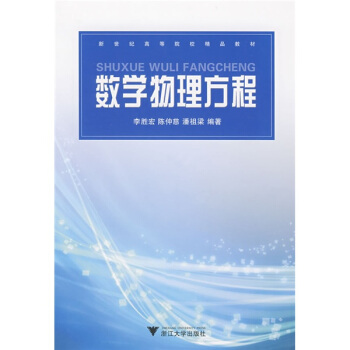

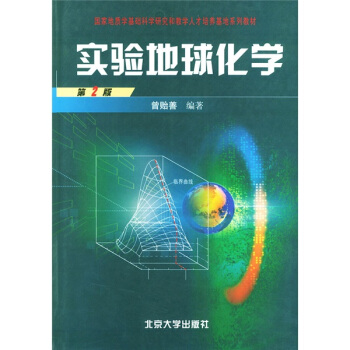


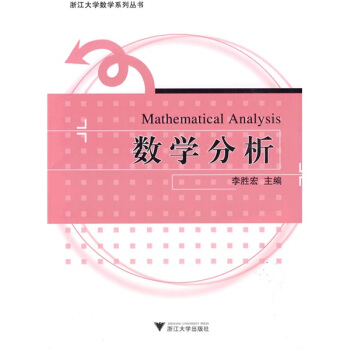
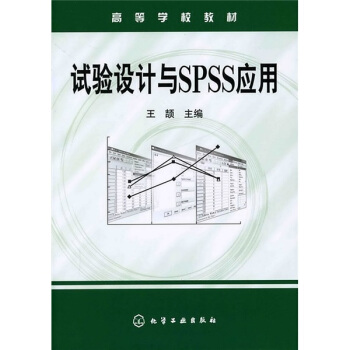
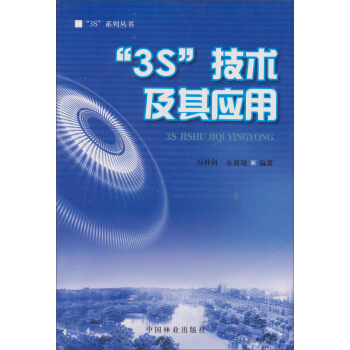
![经典英文物理教材系列:旋量与时空(第1卷) [Spinors and space-time] pdf epub mobi 电子书 下载](https://pic.tinynews.org/10175887/6eb9b9c1-e440-4350-80f2-e9c89783d20d.jpg)



